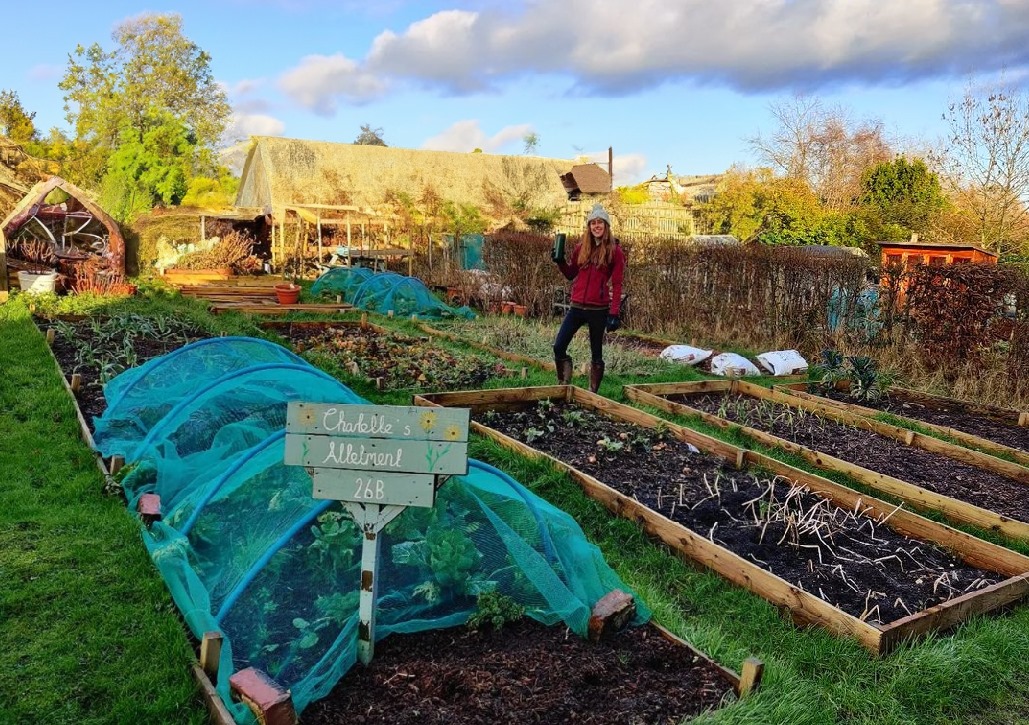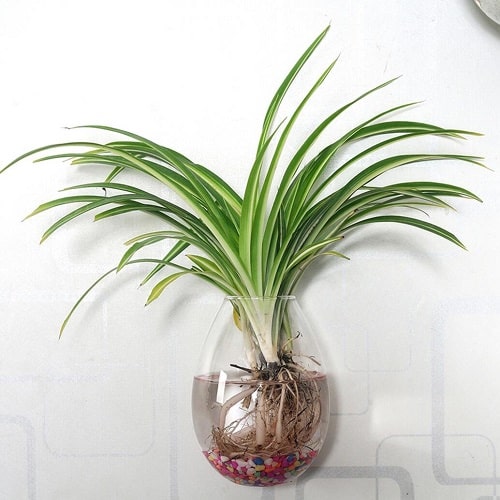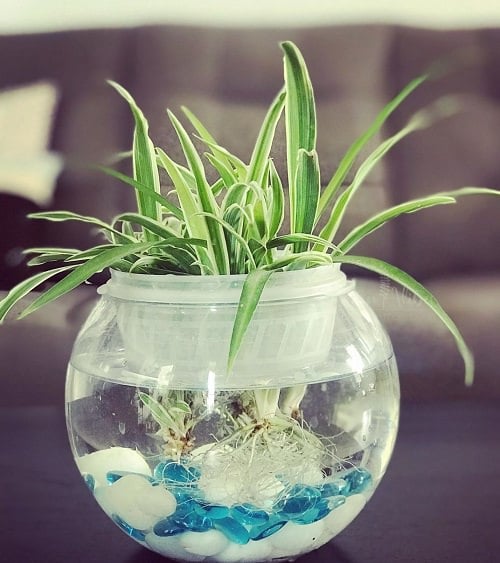Growing Spider Plants in Water is super easy, and using these tricks–you’ll be able to multiply these plants effectively without soil!
Botanically called chlorophytum comosum, a spider plant looks gorgeous, requires minimal care, and can grow for an extended period. It is also a natural air purifier, proven in many scientific studies, and a known Feng shui plant. The best part is, Growing Spider Plants in Water is also possible, and even a novice gardener can do it easily!
Check out our article on the best spider plant types here
Origin
The spider plant is originally from South Africa and was very popular in Victorian-era households. But unlike the place of its origin, it cannot survive full sunlight. The leaves turn brown with too much exposure to the sun and die eventually.
The spider plant is surprisingly low maintenance and does quite well in both soil and water. It is also inexpensive to buy a plant from a nearby nursery or online, and then you can clone the plant at home using these tips on Growing Spider Plants in Water.
Propagating Spider Plant in Water
If you buy a plant from a garden center or a nursery, it’ll come in a pot. From that plant, you can quickly grow multiple ones in the water.
- Cutting the Spiderettes or Plantlets: These are the ‘babies’ the mother plant produces. You can cut them using a clean pair of scissors or a knife.
- Placing the Cuttings: Put them in a jar of water, with only the bottom part submerged.
- Positioning and Growth: Keep Spiderettes upright in a jar or vase. You’ll start to see new roots in 7-14 days.
Learn how to grow spider plants indoors easily here
Spider Plant Care in Water

Growing Location
The plant must be kept away from too much direct sunlight, as it can burn its leaves. It survives best in the combination of sun and shade–Bright morning sunlight and then indirect light during the day. According to Feng Shui, the best location for the plant is the southeastern, southern, and eastern corners of the home.
Water Changing Interval
Always be careful when it comes to changing the water–Once every 5-7 days is the right interval. If you notice water getting pale or discolored before, then replace it before the schedule. Clean water will also allow you to keep a close eye on the development of the roots.
Avoid using too hot or cold water. It’s good practice to use room-temperature water to save the plant from shock. Tap water usually contains fluoridated or chlorinated water, which causes brown leaves. And because of this, use RO, mineral, well, pond, borewell, or rainwater, or let your tap water sit for a day to eliminate the chlorine.
Fertilizing
Any water-soluble balanced fertilizer will help in the development of the plant. Add 1/4 spoon in a gallon of water and transfer it to the jar. Stop feeding the plant for a while if you see burnt leaves due to overfertilization. You can also add fish aquarium water to the vase. It will work as a natural fertilizer.
Benefits of Spider Plants
Studies have proven that spider plant helps in removing toxins like formaldehyde, xylene, toluene, and nitrogen oxides from the surroundings. It also releases oxygen even during the night. The plant is also known to bring luck, prosperity, good health, and happiness to its owner.





Thank you for the informative article. I just bought a beautiful plant. I want to put the whole thing in a single container. Any advice would be welcomed.